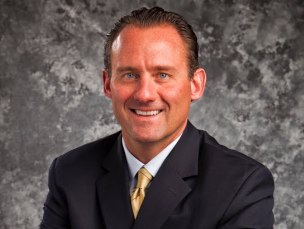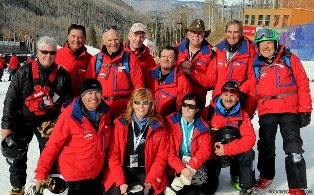Elephant Energy hopes to soar like an eagle delivering Nokero light bulbs to Navajo Nation
Companies seek inexpensive solar solutions to kerosene problem in Four Corners area
Doug Vilsack knows that finding third-world poverty and a lack of connectivity to the electrical grid in modern America might be about as shocking to some people as finding elephants wandering the Navajo Nation in the Four Corners region of Colorado, New Mexico, Arizona and Utah.
So when Vilsack's Denver-based sustainable energy non-profit Elephant Energy researched the situation on the Navajo Nation last year, discovering dangerous kerosene lanterns and heaters and more than 18,000 households completely off the grid, they changed their name to Eagle Energy in the Four Corners area.
Originally founded to provide similar products in Namibia, Eagle Energy is now working hard to deliver solar light bulbs from Denver-based Nokero [No Kerosene] and other sustainable energy products to the Navajo Nation – all the while hoping to stimulate the small-scale entrepreneurial companies offering such services.“Yeah, many Navajo people are still using kerosene,” said Vilsack, a Colorado College and University of Colorado graduate whose father is Agriculture Secretary Tom Vilsack. “Most people still don't have heating. They're using wood for energy. There's just a huge need for even these really small-scale technologies to get rid of this kerosene problem on the Navajo Nation.
“It's a stunning thing to be happening here in our own country.”
Vilsack formed Elephant Energy three years ago to improve the quality of life in Namibia, where only about 15 percent of the rural population is connected to the electrical grid. Kerosene is a potentially toxic fuel source that presents numerous health problems, including the very real risk of household fires. An attorney, Vilsack was doing some work on the Navajo Nation when he noticed similar conditions there.
He said there are several barriers to connecting the estimated one-third of the Navajo Nation households that are off the grid – most of them having to do with expense and geography – but he adds that alternative energy products may hold the best hope for short-term relief.
“There should be a lot of money put into larger scale [solar] systems on people's houses down there, but you have to start somewhere, and if it's with a $5 or $10 solar-powered light bulb, you can accomplish a heck of a lot with that,” Vilsack said. “With one of these bulbs at least you can go a long way toward removing the need for people to go buy kerosene at Wal-Mart.”
Adella Begaye, a Navajo Nation nurse, said she started working as an interpreter for the Indian Health Service when she was a teenager in the 1970s. Back then, she said it was very rare to see patients with asthma or other respiratory diseases. Now it's common.
Begaye, also a community advocate with Diné CARE, points to the large coal-fired power plants built in the region in the 1960s and 70s. She sees the irony in so many people living so close to huge power plants but completely off the grid.
“I know the statistics are pretty high,” Begaye said of the lack of connectivity, “and the sad thing is there's a lot of people that live right in the vicinity of these big power plants and they do not have electricity. And the health impact is worse. Not only is it asthma, it's cardiac problems and just having a hard time breathing. Of course it affects your heart.”
The U.S. Environmental Protection Agency recently issued an order compelling PNM's 1,800-megawatt, coal-fired San Juan Generating Station 15 miles west of Farmington, N.M., to reduce nitrogen oxide emissions by 80 percent in the next five years.
The company is fighting the decision because of what it deems the unnecessary costs, but the EPA cited air-quality and health concerns on the Navajo Nation as well as adverse impacts to nearby national parks and monuments such as Mesa Verde National Park in Colorado.
Late last month it was revealed that the state of New Mexico fined PNM $125,000 (pdf) for six major air pollution violations at the San Juan plant over the course of the last year.
So when Vilsack's Denver-based sustainable energy non-profit Elephant Energy researched the situation on the Navajo Nation last year, discovering dangerous kerosene lanterns and heaters and more than 18,000 households completely off the grid, they changed their name to Eagle Energy in the Four Corners area.
Originally founded to provide similar products in Namibia, Eagle Energy is now working hard to deliver solar light bulbs from Denver-based Nokero [No Kerosene] and other sustainable energy products to the Navajo Nation – all the while hoping to stimulate the small-scale entrepreneurial companies offering such services.“Yeah, many Navajo people are still using kerosene,” said Vilsack, a Colorado College and University of Colorado graduate whose father is Agriculture Secretary Tom Vilsack. “Most people still don't have heating. They're using wood for energy. There's just a huge need for even these really small-scale technologies to get rid of this kerosene problem on the Navajo Nation.
“It's a stunning thing to be happening here in our own country.”
Vilsack formed Elephant Energy three years ago to improve the quality of life in Namibia, where only about 15 percent of the rural population is connected to the electrical grid. Kerosene is a potentially toxic fuel source that presents numerous health problems, including the very real risk of household fires. An attorney, Vilsack was doing some work on the Navajo Nation when he noticed similar conditions there.
He said there are several barriers to connecting the estimated one-third of the Navajo Nation households that are off the grid – most of them having to do with expense and geography – but he adds that alternative energy products may hold the best hope for short-term relief.
“There should be a lot of money put into larger scale [solar] systems on people's houses down there, but you have to start somewhere, and if it's with a $5 or $10 solar-powered light bulb, you can accomplish a heck of a lot with that,” Vilsack said. “With one of these bulbs at least you can go a long way toward removing the need for people to go buy kerosene at Wal-Mart.”
Adella Begaye, a Navajo Nation nurse, said she started working as an interpreter for the Indian Health Service when she was a teenager in the 1970s. Back then, she said it was very rare to see patients with asthma or other respiratory diseases. Now it's common.
Begaye, also a community advocate with Diné CARE, points to the large coal-fired power plants built in the region in the 1960s and 70s. She sees the irony in so many people living so close to huge power plants but completely off the grid.
“I know the statistics are pretty high,” Begaye said of the lack of connectivity, “and the sad thing is there's a lot of people that live right in the vicinity of these big power plants and they do not have electricity. And the health impact is worse. Not only is it asthma, it's cardiac problems and just having a hard time breathing. Of course it affects your heart.”
The U.S. Environmental Protection Agency recently issued an order compelling PNM's 1,800-megawatt, coal-fired San Juan Generating Station 15 miles west of Farmington, N.M., to reduce nitrogen oxide emissions by 80 percent in the next five years.
The company is fighting the decision because of what it deems the unnecessary costs, but the EPA cited air-quality and health concerns on the Navajo Nation as well as adverse impacts to nearby national parks and monuments such as Mesa Verde National Park in Colorado.
Late last month it was revealed that the state of New Mexico fined PNM $125,000 (pdf) for six major air pollution violations at the San Juan plant over the course of the last year.
![]() 1 Comment on "Elephant Energy hopes to soar like an eagle delivering Nokero light bulbs to Navajo Nation"
1 Comment on "Elephant Energy hopes to soar like an eagle delivering Nokero light bulbs to Navajo Nation"



 Vail Town Council to weigh new plan to redevelop T...
Vail Town Council to weigh new plan to redevelop T...  All about indexes
All about indexes  Transforming your social security into a winning r...
Transforming your social security into a winning r...  Pass sales, real estate transactions, revenues inc...
Pass sales, real estate transactions, revenues inc...  Vail Valley native with passion for Biophilic inte...
Vail Valley native with passion for Biophilic inte...  Beaver Creek starts work on new summer activities
Beaver Creek starts work on new summer activities  Land Trust, ECO Trails, Vail Resorts team up to cl...
Land Trust, ECO Trails, Vail Resorts team up to cl...  EUROVISION named Host Broadcaster for 2015 World A...
EUROVISION named Host Broadcaster for 2015 World A...  Vail Resorts brings back Lindsey Vonn's 'School of...
Vail Resorts brings back Lindsey Vonn's 'School of...  Hundreds turn out for 2015 World Championships vol...
Hundreds turn out for 2015 World Championships vol...  Eagle County Senior Health Expo and 9th Annual Hea...
Eagle County Senior Health Expo and 9th Annual Hea...  Final race of Vail Mountain Trail Running Series s...
Final race of Vail Mountain Trail Running Series s...  Before you write your will ...
Before you write your will ...  2015 World Ski Championships volunteer recruitment...
2015 World Ski Championships volunteer recruitment...  Ascent Sotheby’s International Realty in Vail an...
Ascent Sotheby’s International Realty in Vail an...  CDOT outlines road closures for local stages of US...
CDOT outlines road closures for local stages of US...  Italian artist creates unique trophies for Vail, B...
Italian artist creates unique trophies for Vail, B...  Vail Recreation District once again hosting Jake W...
Vail Recreation District once again hosting Jake W... 


t_boyd – Sept. 07, 2011, at 6:19 p.m.
Thanks for a great story. It's hard to believe that so many people are living without electricity right here in the USA - working with Doug Vilsack and the Navajo people to bring solar to their reservation has been one of the most rewarding experiences of my life.
Several of us at Nokero hail from Vail, and we love reading the site and keeping up on what's REAL in the Vail Valley.
Thanks,
-Tom